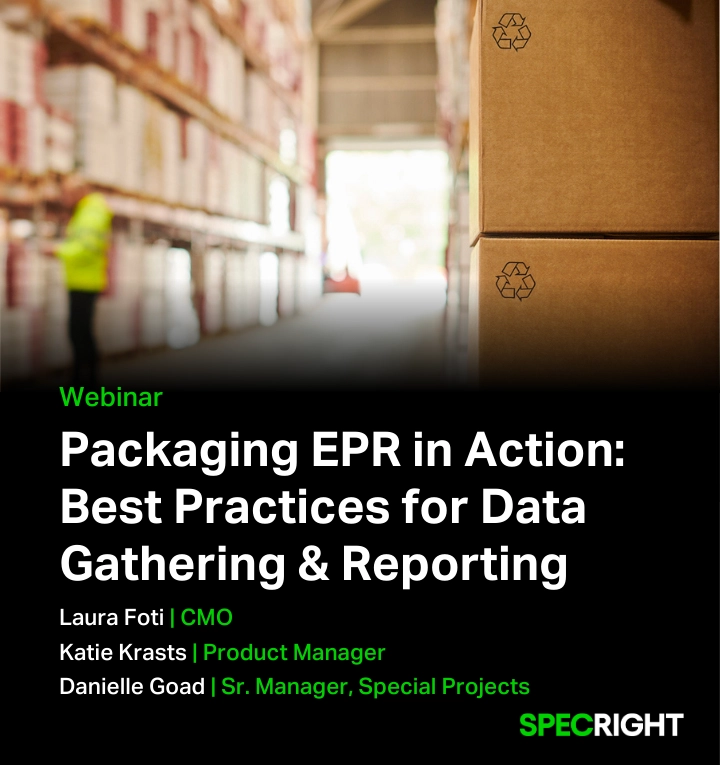In a rapidly changing regulatory landscape, managing extended producer responsibility (EPR) is more critical than ever. During our recent webinar, “Packaging EPR in Action: Best Practices for Data Gathering and Reporting,” we explored innovative strategies to navigate these complexities, including the importance of data readiness and standardization, as well as the type of data you need to collect in order to remain compliant.
If you missed the webinar, some of the key takeaways are highlighted below.
The Urgency around EPR
Extended producer responsibility requires companies to manage a broad range of data at an unprecedented scale. With legislation varying across countries and states, compliance can be daunting. For many brands, the challenge begins with gathering and standardizing crucial data, a task made even more challenging when you rely on suppliers and vendors for this data.
Ensuring completeness and accuracy, along with the resource allocation to gather the data, can be a daunting task. And if you view EPR as the ongoing initiative it is rather than a one-time project, the time and money invested in compliance take on significantly greater importance.
Data as the Foundation
Data is at the heart of successful EPR reporting. By moving away from traditional spreadsheets and disconnected systems, companies can harness technology for more efficient data management. This approach not only simplifies the reporting process and makes it repeatable, but also empowers teams to focus on proactive sustainability initiatives versus data gathering.
As more and more companies face these new challenges of reporting and compliance, it is even more critical that data is accurate and accessible, although in Specright’s 2025 State of Spec Management report, 75% of respondents stated there was a need for better specification management in their organization. This highlights an even greater need—and opportunity—for companies to modernize their data infrastructure.
The Role of Specification Data Management (SDM)
Specright’s Specification Data Management™ (SDM) Platform enables seamless data integration and compliance readiness. Our platform offers a centralized solution for managing product and packaging specifications, ensuring stakeholders have access to accurate and up-to-date data. This allows companies to go beyond compliance, fostering innovation and driving sustainable change across their supply chains.
Investing in better specification management isn’t just about meeting regulatory requirements; it’s about laying the groundwork for smarter, more strategic decision-making across the supply chain. In a world where sustainability and compliance are increasingly intertwined, data isn’t just support—it’s the strategy.
Achieving Sustainable Success
By leveraging Specright’s SDM platform, companies can transition from merely complying to embedding sustainability into their product lifecycle management. The platform’s ability to link components to finished goods through many-to-many connections illustrates how integrated data management supports sustainability goals and innovation. This means you can shift your mindset to have sustainability be part of the product development from the start, instead of trying to re-work something retroactively.
Looking Ahead
The urgency around EPR is undeniable, but with proactive strategies and the right technology, companies can navigate these regulations effectively. Specright is committed to supporting organizations at every stage of their EPR journey, ensuring they are equipped to meet future challenges.
Our webinar underscored the power of collaboration and data-driven decision-making in achieving sustainability targets. To stay updated on EPR and other relevant topics, consider subscribing to our Beyond Packaging podcast, where we dive deeper into the intersection of packaging, technology, and current events.
By embracing a spec-first approach with Specright, companies can transform specification management into a strategic advantage, leading to greater quality, customer satisfaction, and profitability.
Explore More Blogs
Get Started
With Specright’s Solution Suite, you can digitize, centralize, and link your specification data to drive efficiencies, intelligence, traceability, and collaboration within your organization and across your supply chain network.




